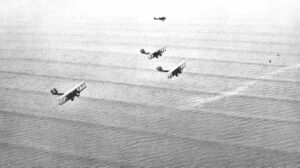Cnoidal wave (nonfiction)
In fluid dynamics, a cnoidal wave is a nonlinear and exact periodic wave solution of the Korteweg–de Vries equation. These solutions are in terms of the Jacobi elliptic function cn, which is why they are coined cnoidal waves. They are used to describe surface gravity waves of fairly long wavelength, as compared to the water depth.
The cnoidal wave solutions were derived by Korteweg and de Vries, in their 1895 paper in which they also propose their dispersive long-wave equation, now known as the Korteweg–de Vries equation. In the limit of infinite wavelength, the cnoidal wave becomes a solitary wave.
The Benjamin–Bona–Mahony equation has improved short-wavelength behaviour, as compared to the Korteweg–de Vries equation, and is another uni-directional wave equation with cnoidal wave solutions. Further, since the Korteweg–de Vries equation is an approximation to the Boussinesq equations for the case of one-way wave propagation, cnoidal waves are approximate solutions to the Boussinesq equations.
Cnoidal wave solutions can appear in other applications than surface gravity waves as well, for instance to describe ion acoustic waves in plasma physics.
In the News
Fiction cross-reference
Nonfiction cross-reference
External links:
- Cnoidal wave @ Wikipedia
